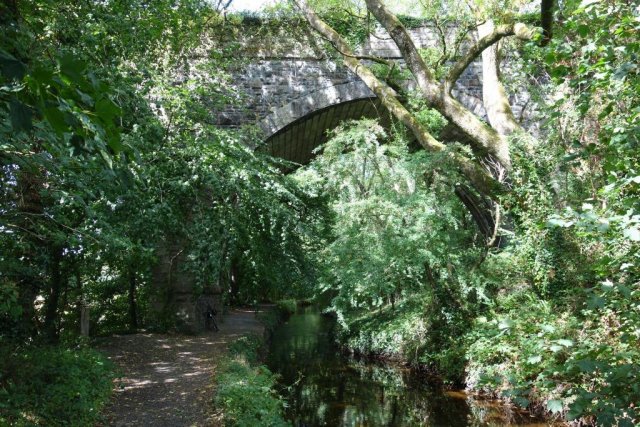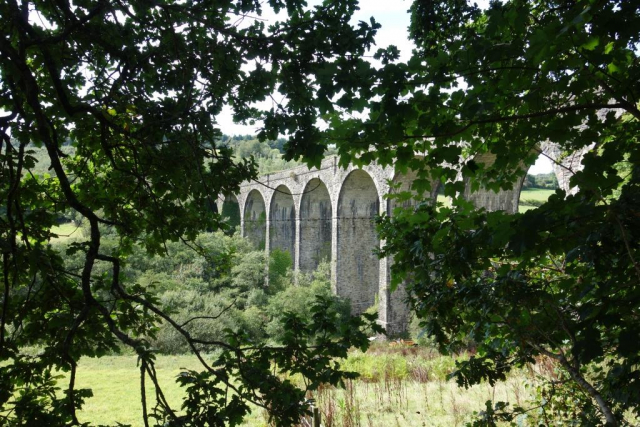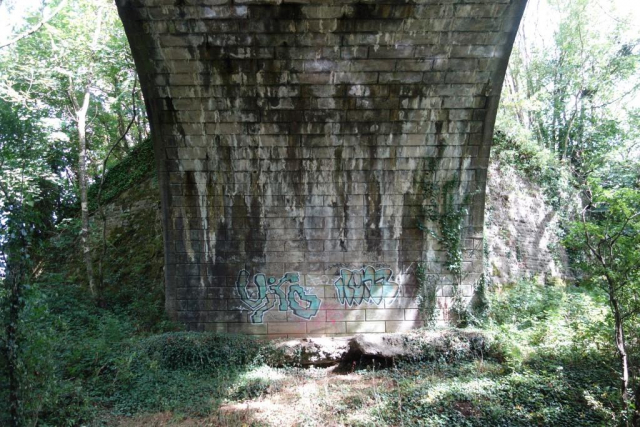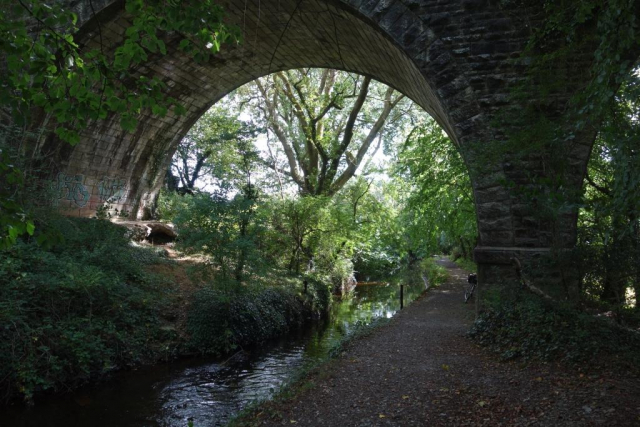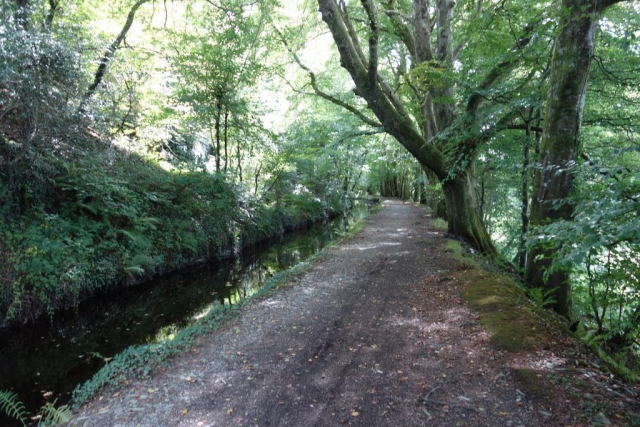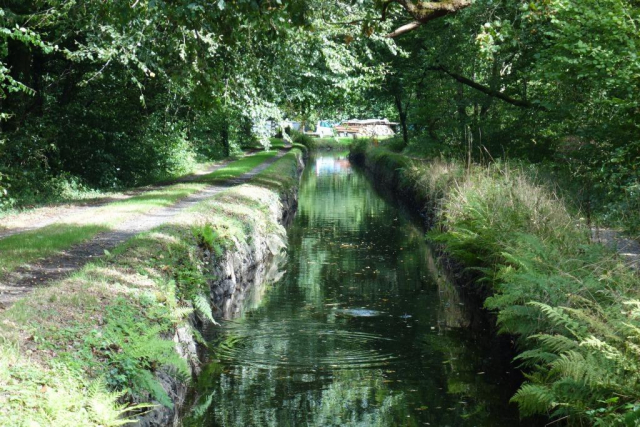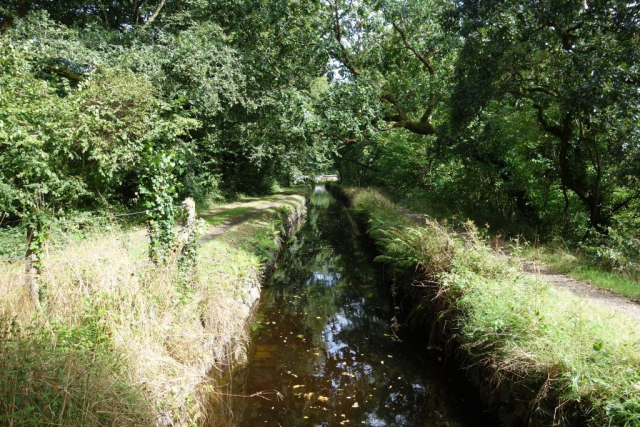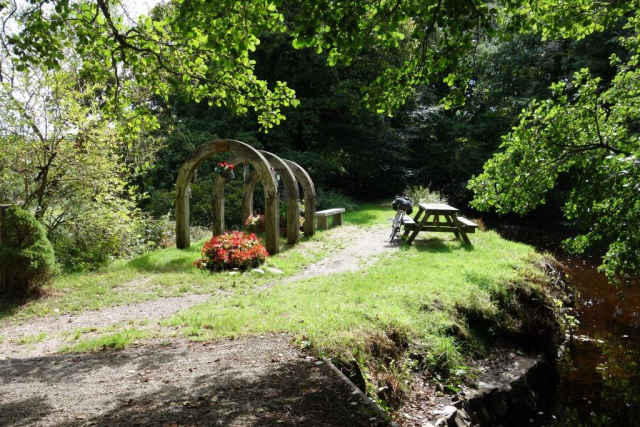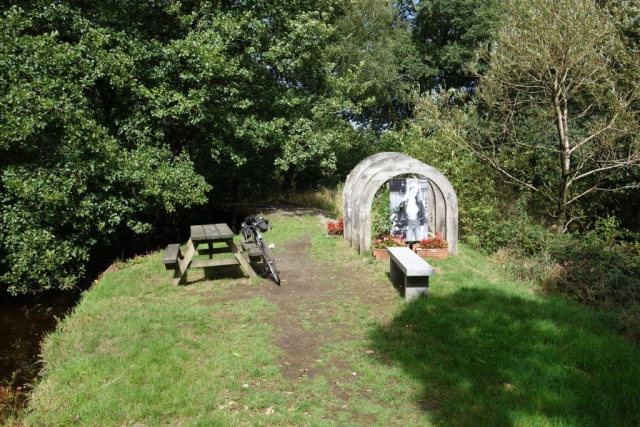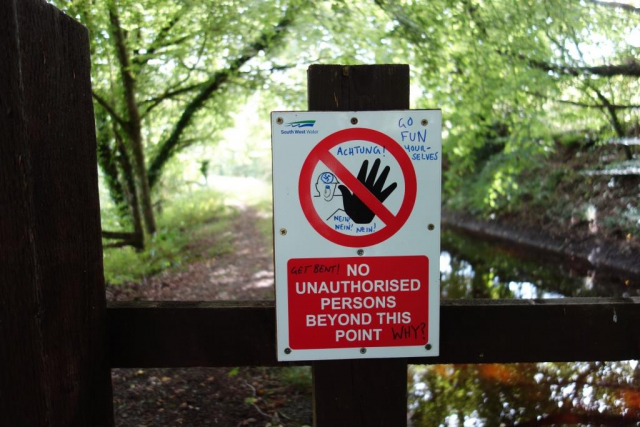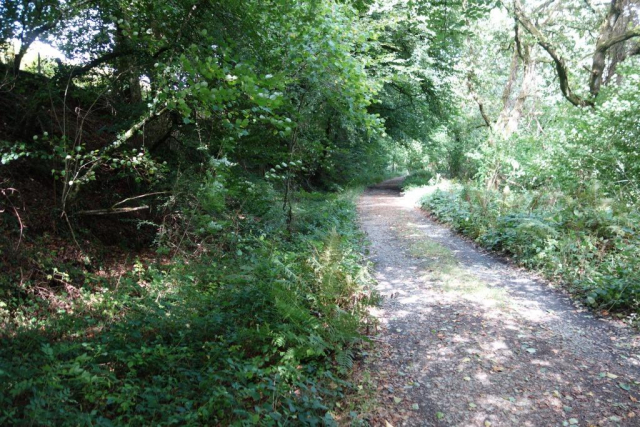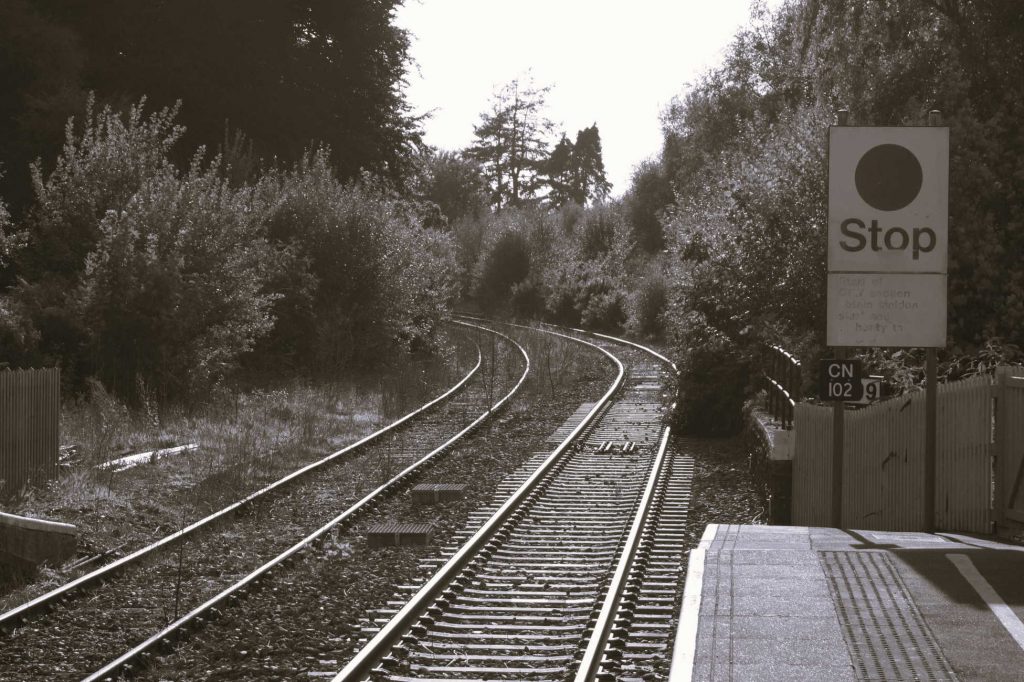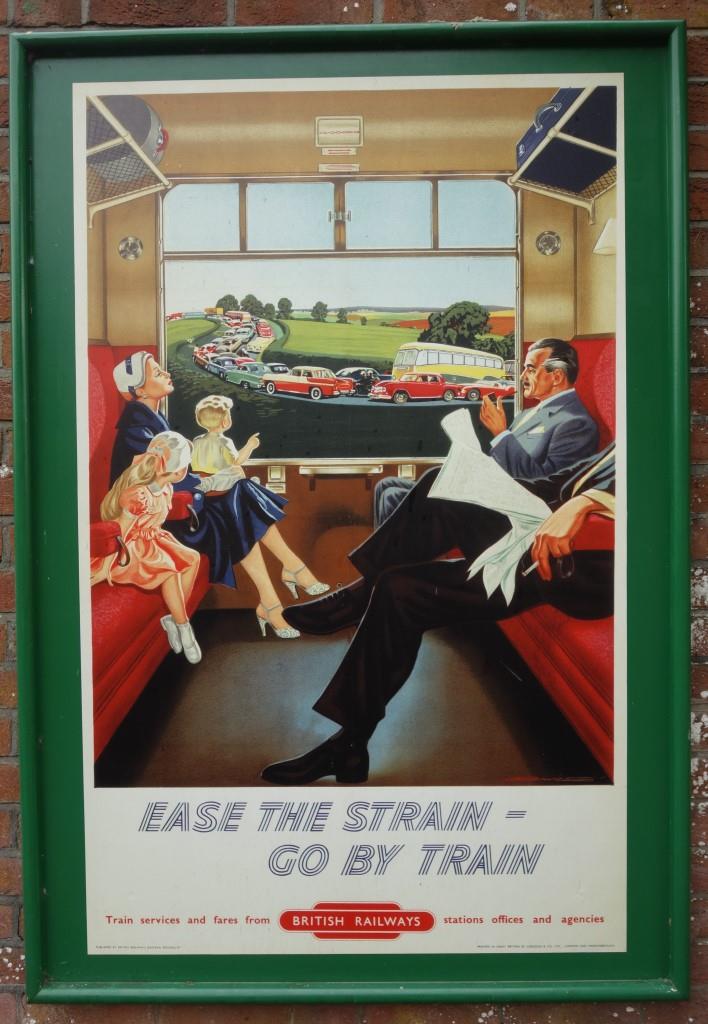Covering Mary Tavy to Bere Alston for the scout’s Okehampton to Friary refresher gave the opportunity for a round trip.
This he chose to do clockwise on the map and so he went to St. David’s on a Saturday to catch the 0919 to Plymouth.
The scout could once have circled the moor by train from home using five, or possibly four, trains. Now he was to catch three and find a 22¼-mile gap in what had once been a circle.
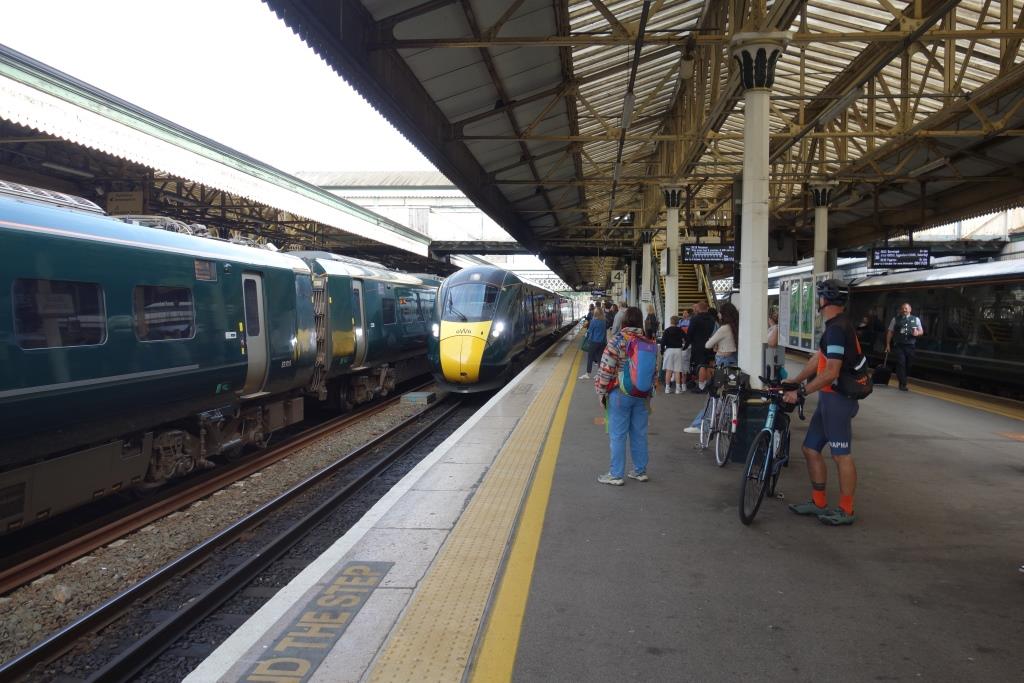
The chap with the other bicycle turned out to be one of three wanting the two spaces in the carriage which was to stop in this “Zone,” marked boldly on the platform. He let the scout enter before him but a member of platform staff quickly pounced and ordered the one without a reservation to go to the rear of the train, where there was another compartment. The scout owned up and hurried along the platform to where the Guard was standing at an open door.
The scout was ready to abort the plan, as he knew that if he missed the connection to Bere Alston, there would not be another for two hours.
But the cycle space was empty and the scare turned out well. The Guard from the sub-continent could not have been friendlier. He told the scout that he never used his travel concession, preferring to drive to Cornwall with his family. His 11 years’ service was beaten by the scout telling him that he had joined B.R. 51 years ago. The cycle space was in a First Class carriage and the Guard promptly ushered the scout into its luxurious confines, adding: “I’m on until Plymouth.”
On a 9-car unit, there are several more places where bicycles can be stowed but the platform information screen only advised of two.
To make matters worse, on top of the spaces being scattered, there is no means of knowing whether they have been reserved. The cubicles are poorly designed and even a passenger who has reserved a space may find it occupied by luggage or passengers, either standing or sitting on the racks.
Diesel powered H.S.T’s. were supposed to pave the way for the electric trains which were to follow. Yet, fifty years later, their successors have to haul around tanks of gasoil and less powerful diesel engines because the country has singularly failed to complete main line electrification. In fact, the so called “bi-mode” train is being used as the reason not to go any further with the catenary.
Inadequate bicycle stowage is just a minor part of a major failure. Hitachis almost symbolize the fragmented railway which gave birth to them.
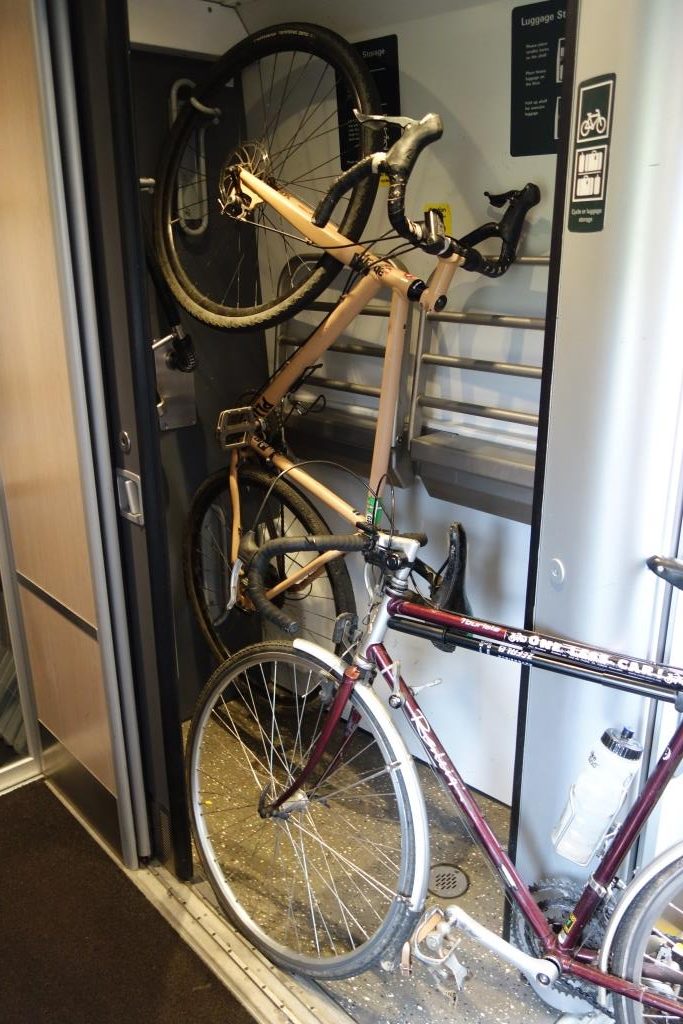
The train passed Moretonhampstead Junction and the East Dartmoor line that a Teign Valley man would once have used when travelling west.
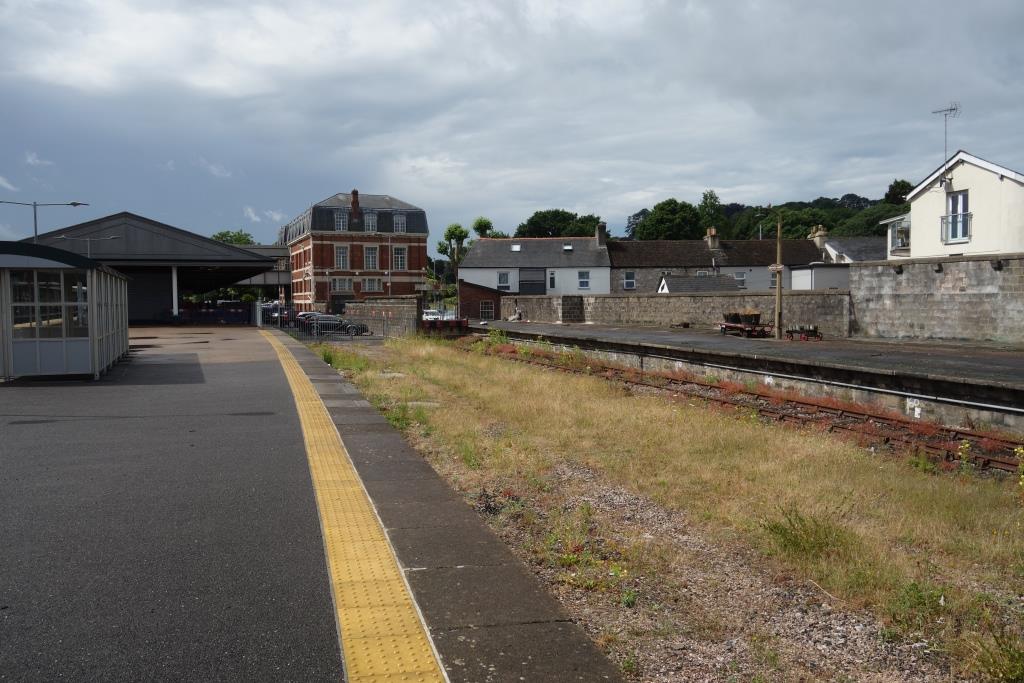
The Guard made several announcements, warning that the train would not be stopping at Totnes, so the scout was surprised to see on the approach that the “feathers” (route indicator) were set for the platform line. The resultant speed restriction caused a leisurely climb of Rattery bank. When he returned home, the scout found that the train had been booked via the loop.
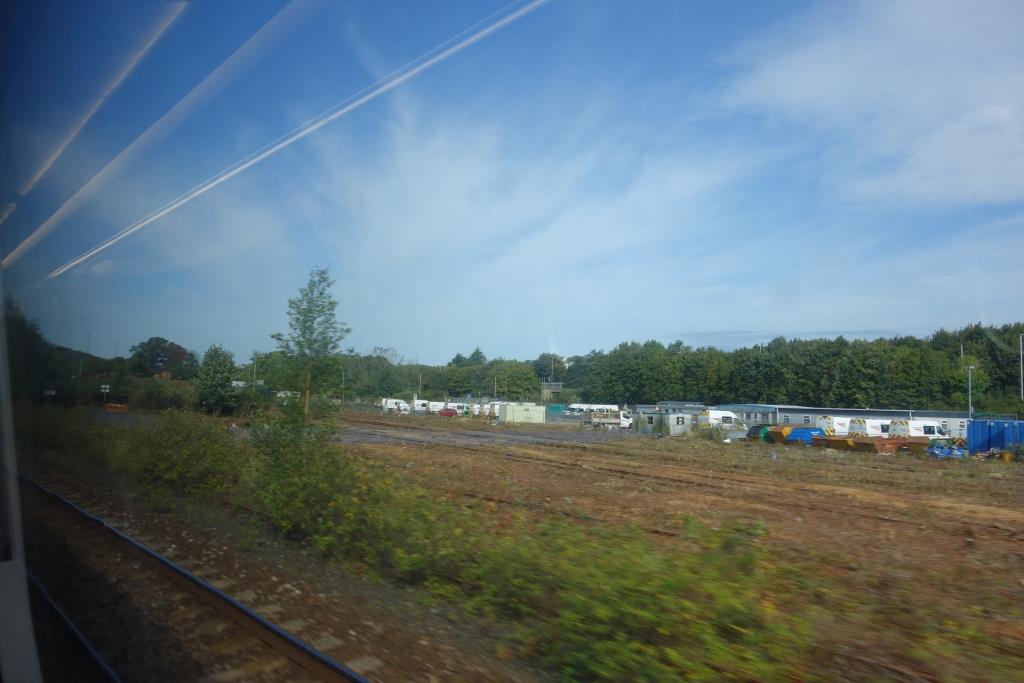
The train was two late arriving at North Road, the running not helped by the sluggish climb of Rattery. The scout found the Guard after he’d been relieved and thanked him again, both for delaying the train and accommodating him in First. The scout forgot to ask him the reason for the train taking the loop at Totnes.
An informed friend provided the answer the next day: there was a defect on the main line. And the scout did not further delay the train at St. David’s as it was two late arriving and departing.
The train to Gunnislake was a nine-minute connection, so the scout hastened to the bay platform, once part of the island.

Platform Three was on the Down island until a bridge was made, making four bay platforms. The Up bays, once dedicated to Royal Mail, have long been disused.
The tower block, which housed the Western Region’s Plymouth Division offices, was opened by Dr. Beeching, who later the same day referred to is as a “white elephant.” The scout remembers going upstairs to look in on Plymouth Control and the Telegraph Office, and to sit rules exams.
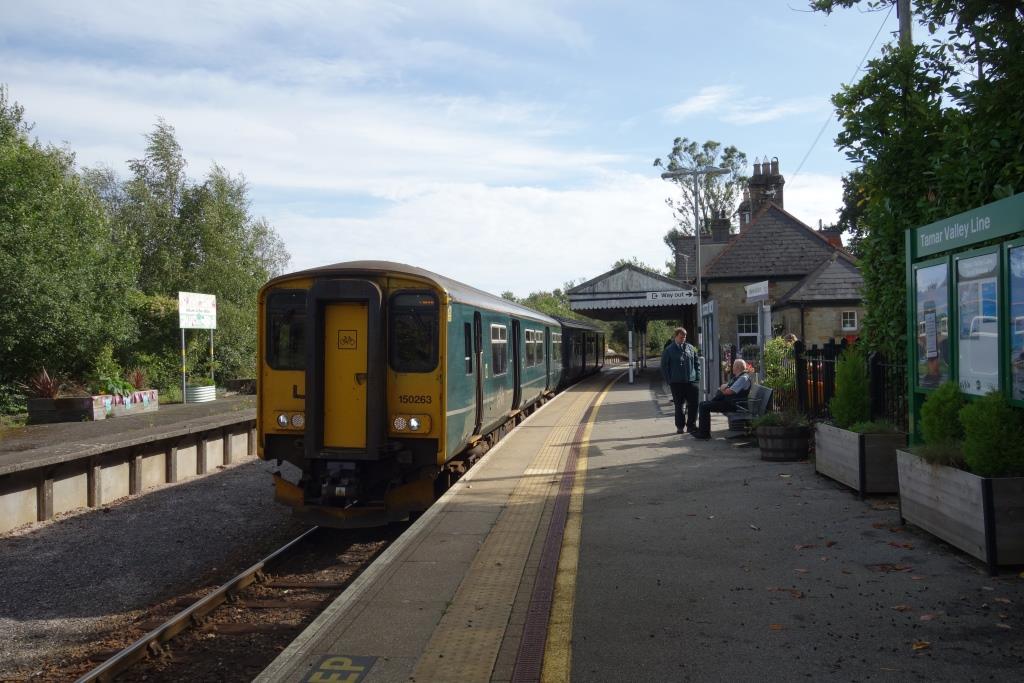
The scout asked one of the three Guards whether it was a staff outing. It was revealed that the actual Guard was about to pass out; one was his “minder;” and the other was taking fares. The minder chatted merrily about the modern training process, with its aptitude testing, the like of which the old boys, including the scout, would probably have failed.
Both men in the picture were well aware that this had been the Southern main line.
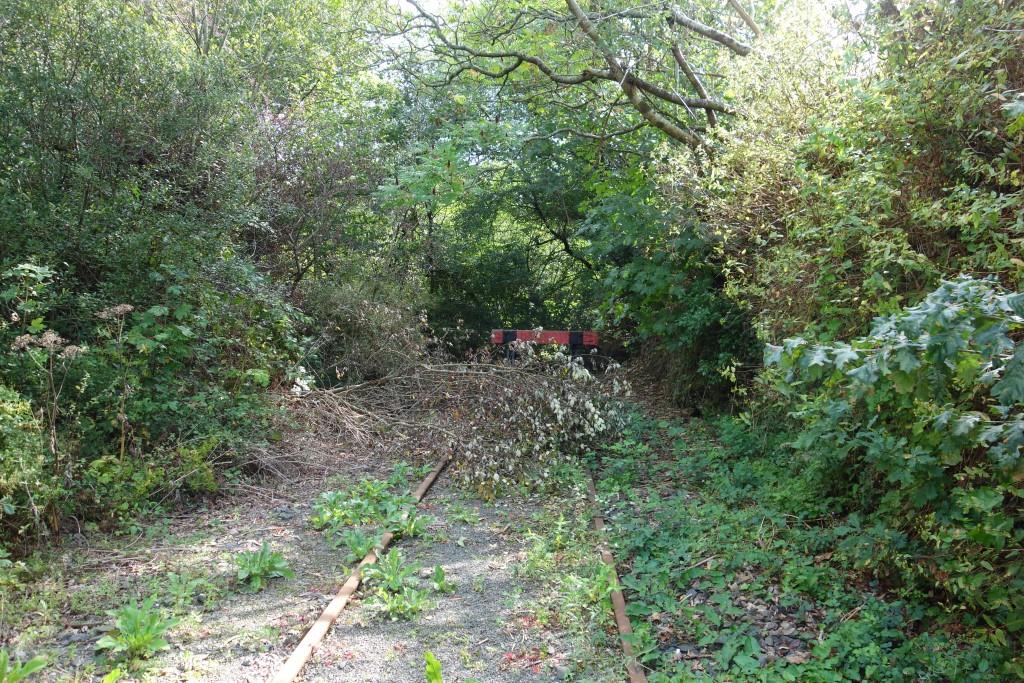
The scout followed the line, stopping here and there to take photographs and to reflect on his faint memories of travelling this way to Plymouth. He worked his way around the bridges, took in a bridleway from where a superb view of the Tamar Valley could be had and reached the main road. He forked for Shillamill and went to the eastern portal of the tunnel.
Then, for the first time, he joined the Tavistock Canal and followed it as far as he could, passing beneath Shillamill Viaduct.
The scout rode the towpath into town and then climbed Callington Road to continue following the railway from the new housing sprawl. He worked his way along and photographed the viaduct and station before dropping into town to buy his lunch, which he ate in a sunny spot in The Meadows Pleasure Ground.
In not much more than half an hour, he was away up the hill to the old North Station to resume his ride. He stopped at Wallabrook Viaduct and a few other places, before descending from the main road to Wringworthy Farm, where he had been twice before but without taking any photographs. On both previous occasions, he had spoken to the owner of the farm. This time, the owner was a bit wary of giving permission, which is quite understandable, given the danger these days of a location being put on the map. An assurance was given that this column, with its few readers, would be most unlikely to draw the attention of undesirables to a place.
After Wringworthy, it was a non-stop ride to Sourton, where the scout thought of joining the line by the church. He chose to continue along a road he hadn’t ridden for many years and he joined the line where road and rail part company.
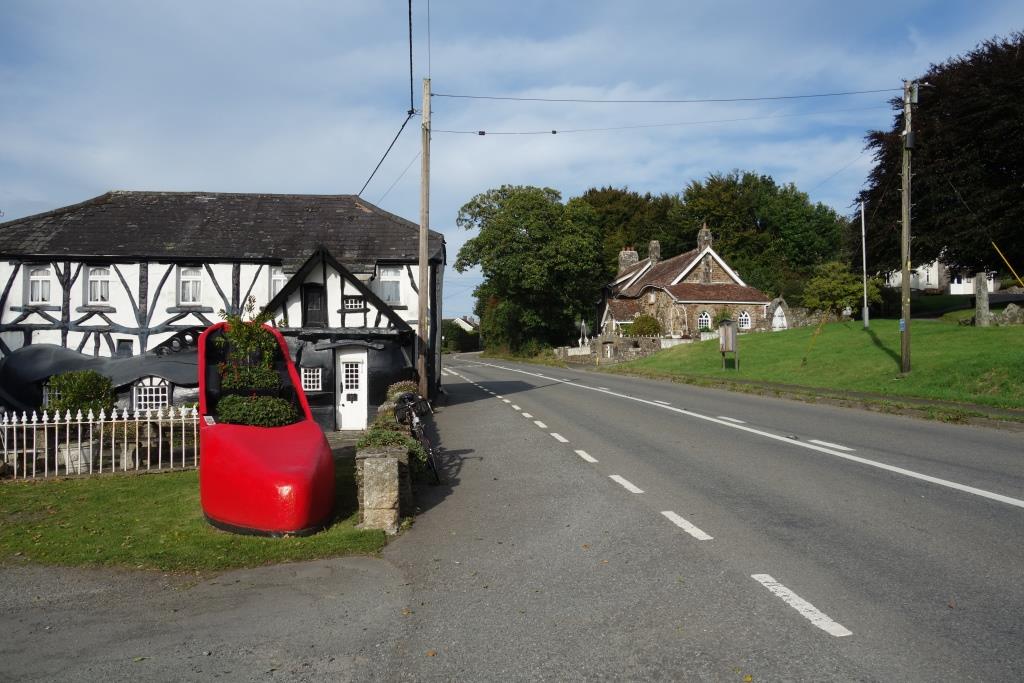
The scout was being buffeted by the strong southeasterly while he was in the shelter of the trees so he knew that the viaduct crossing would be a bit hairy. At the other end, he was once more beside the railway, albeit a withered extent of it.
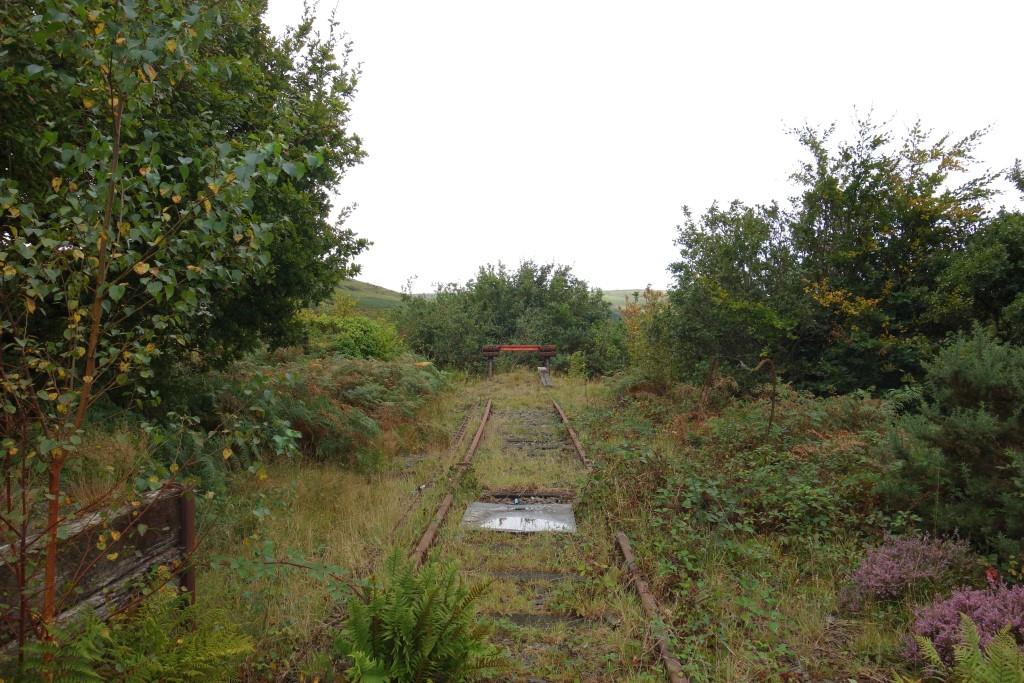
The scout reached Okehampton minutes after the departure of the 1725. The next train was the 1830. As luck would have it, some of the Station Friends were relaxing in the Downside office and so the scout went to see if the teapot was in use. He was welcomed and was very glad to be given a cup of tea and a slice of Pat’s homemade chocolate cake.
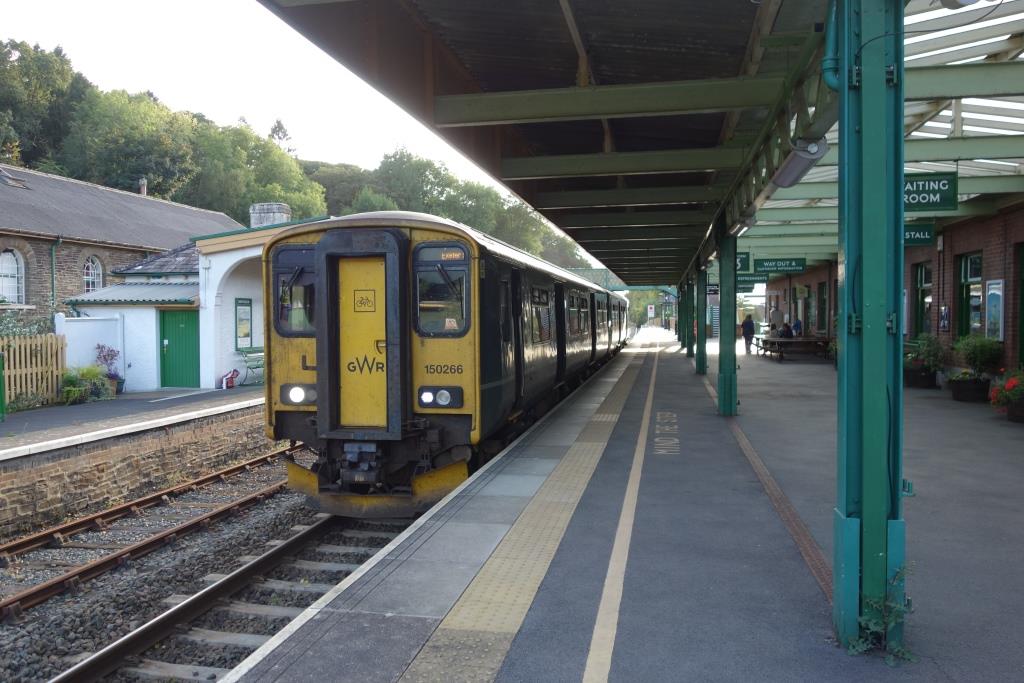
When the scout returned to the utilicon, he had clocked 32 miles.
The photographs taken on this ride may be found on the “Okehampton to Friary” page.



